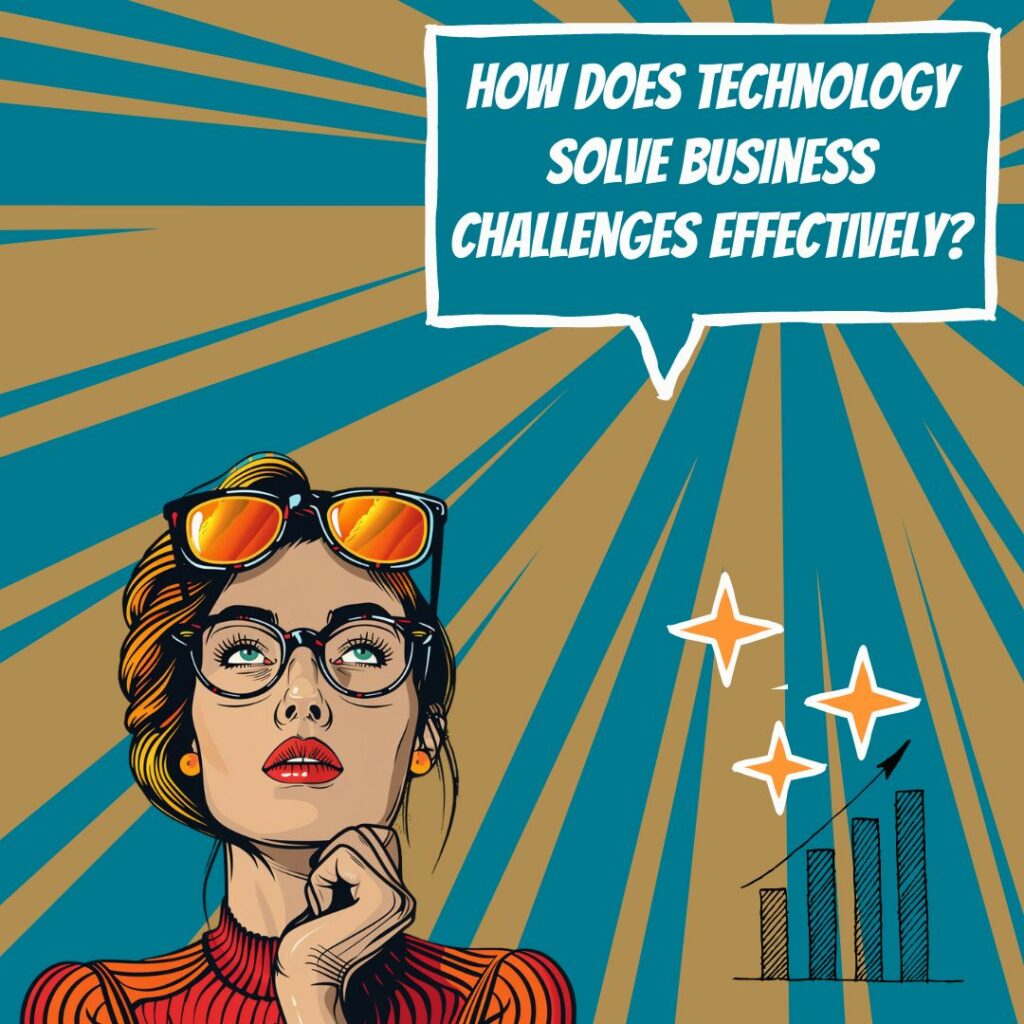Key Takeaways
✅ Effective Change Management: Embracing new technologies is not just about the installation; it's about getting everyone on board. With 70% of digital transformations failing, mainly due to employee resistance and lack of support, a solid change management strategy is key. This involves clear communication, training, and involvement in the process to see a 30% greater chance of success. Businesses should foster a culture ready for continuous learning and adaptation.
✅ Choosing the Right Technology: It's startling to note that only 30% of software projects are completed on time and within budget. The issue often lies in not selecting technology that aligns with the business' core needs and capabilities. Assessment of your business model, user-friendliness, scalability, and integration capabilities of the technology is critical, alongside ensuring ongoing support to navigate the 70% failure rate of IT projects.
✅ Automation and Integration: Automation isn't just a buzzword; it's a business game-changer. Reports indicate leveraging automation can boost productivity by up to 40% and reduce operational costs. Integrating technologies streamlines processes, enhances data analysis, and promotes a seamless workflow environment. This strategic approach not only eradicates manual errors but also empowers decision-making with real-time data insights, setting a solid groundwork for scalable success.
 Introduction
Introduction
Is your business ready to tackle the future head-on? Leverage technology to overcome challenges? In an ever-evolving business landscape, the technology adoption curve is steep, but staying ahead is not just an option; it’s a necessity for survival. With 44% of organizations facing breaches due to outdated or poorly secured applications, and a staggering $17 million wasted annually on failed digital projects, the stakes are high. Yet, with the proper approach, these hurdles are not insurmountable but rather stepping stones to greater achievement.
This piece peels back the layers on innovative practices, modern trends, and the transformative power of technology to maximize revenue, Return on Advertising Spend (ROAS), and Return on Investment (ROI). From bridging the gap between development and IT operations to navigating the minefield of cybersecurity, prepare to dive into a reservoir of actionable insights and groundbreaking information that could redefine the way you think of technology in business success.
Top Statistics
| Statistic | Insight |
|---|---|
| Cost of a data breach in the U.S.: $8.64 million. | This figure underscores the critical importance of robust data security measures to avoid financial losses and protect customer trust. |
| Percentage of business leaders who are under "incredible pressure" to accelerate digital transformation: 67%. | This statistic highlights the urgency with which companies are needing to adapt to digital processes to stay competitive in today's market. |
| AI's role in enhancing cybersecurity by detecting and responding to threats in real-time: AI can identify unusual patterns and alert leaders to potential breaches. | Demonstrates how AI technologies can be leveraged to enhance security measures, providing a more adaptive and proactive defense against cyber threats. |
| Percentage of remote workers in the U.S. who prefer to continue working from home: Two-thirds. | This shows the shifting landscape of the workforce and the need for businesses to embrace remote work technologies and policies to attract and retain top talent. |
| Challenges in implementing new solutions and technologies: Major changes to a company’s IT infrastructure can have a major disruptive effect on business operations. | Highlights the necessity of strategic planning and expertise in integrating new technologies to minimize disruption and maximize the benefits of innovation. |
Leveraging Technology to Tackle Business Hurdles
In today's fast-paced digital landscape, businesses are increasingly turning to technology to navigate through their challenges. A staggering revelation from Cybersecurity Insiders showed that almost 44% of organisations experienced application breaches last year alone, underscoring the urgent need for tighter cybersecurity measures. The barriers to achieving robust cybersecurity are many, including a lack of skilled personnel, low awareness about security among employees, and insufficient collaboration among departments. How can businesses bolster their defenses against these breaches while fostering a culture of cybersecurity awareness across all levels?
Navigating Digital Transformation
Embarking on the journey of digital transformation is no easy feat. With only 41% of digital projects meeting their key performance indicators (KPIs) and an alarming $17 million going down the drain on failed projects, the road to digitalization is fraught with hurdles. Many of these challenges mirror those faced in cybersecurity efforts: a scarcity of skilled talent, low security understanding, and a lack of support from management. What strategies can businesses employ to ensure their digital transformation efforts don't just start off with a bang but also deliver sustainable success?
Adopting Site Reliability Engineering
Site Reliability Engineering (SRE) promises to bridge the oftentimes gaping chasm between software development and IT operations. However, barriers such as a lack of skilled employees, poor internal understanding of SRE principles, insufficient tools, time, and managerial support are slowing down its adoption. Considering that SRE is pivotal in ensuring that software applications are reliable and can effectively meet user demands, how can organizations better prepare their teams for a smooth SRE implementation?
Overcoming Corporate Technology Adoption Challenges
It's clear that successful technology adoption in corporate environments is not solely a technological challenge but also a human and strategic one. Learning from successful Chief Information Officers (CIOs), it's evident that overcoming these hurdles requires an active exchange of ideas and experiences among peers. This kind of collaboration, coupled with strategic planning, emerges as critical in navigating the complexities of technology adoption. However, how can businesses foster an environment that encourages this level of collaboration and strategic foresight?
Tackling Digital Transformation Challenges
The core of digital transformation lies in radically reimagining how businesses operate, engage with customers, and deliver value. This requires more than just the implementation of new technologies—it demands a holistic shift in business operations. Yet, resistance, misunderstanding, and fear often stall these efforts. With lack of change management strategy, complicated technology, and evolving customer needs posing significant challenges, what steps can organizations take to move beyond these obstacles and fully embrace digital transformation?
Small Business IT Concerns: Budgeting, Hiring, and Scaling
For small businesses, the IT landscape presents a unique set of challenges, notably budget constraints, a general lack of understanding of the technological realm, and the daunting task of scaling IT solutions. Finding the right balance in budgeting, opting to hire internal or external IT specialists, understanding the depth of the IT sphere, and ensuring systems are secure are pivotal steps. But how can small businesses navigate these choppy waters effectively to ensure their IT needs are met without compromising on quality or security?
Future-Proofing Against Emerging Technology Challenges
As we look towards the horizon, the importance of preparing for emerging technology challenges cannot be overstated. With the threat landscape constantly evolving, knowledge of potential future challenges like data breaches and cybersecurity threats becomes invaluable. Embracing technology trends such as inventory management, cloud-based resources, automation, data security, and project management software can offer businesses a lifeline. What strategies should companies adopt today to safeguard their future tomorrow?
In a world where technological advancements show no signs of slowing down, understanding and leveraging these technologies to overcome business challenges is more critical than ever. Whether it's fortifying cybersecurity, executing successful digital transformations, or ensuring the effective adoption of new technologies, the future belongs to businesses that can adeptly navigate these digital waters.
AI Marketing Engineers Recommendation
Recommendation 1: Utilize big data analytics to optimize your decision-making process: In today's digital age, data is plentiful but making sense of it can be daunting. By implementing advanced data analytics tools, businesses can uncover valuable insights about customer behavior, market trends, and operational efficiency. According to a survey by NewVantage Partners, 91.6% of business leaders surveyed are increasing their investments in big data and AI, indicating a significant trend towards data-driven decision-making in the corporate world
Recommendation 2: Adopt AI and machine learning to significantly improve customer experience: Artificial intelligence can help businesses anticipate customer needs, offer personalized recommendations, and provide instant customer support through chatbots. For example, Gartner predicts that by 2023, customers will prefer to use speech interfaces to initiate 70% of self-service customer interactions, up from 40% in 2019. By harnessing the power of AI, companies can create a more responsive, personalized, and efficient customer service experience.
Recommendation 3: Implement blockchain technology to enhance your business's security and transparency: Blockchain can offer a secure and unchangeable record of transactions, which is invaluable in preventing fraud and ensuring data integrity. Beyond its initial application in cryptocurrency, blockchain technology is finding uses in supply chain management, securing sensitive medical records, and ensuring the authenticity of products. Deloitte's 2020 Global Blockchain Survey revealed that 55% of respondents consider blockchain as a top strategic priority, highlighting its growing importance across various industries.
Relevant Links
- Bulletproof Your Business Against Cyber Threats: Strategies That Work
- Unlock the Secrets to Overcoming Tech Talent Shortages
- Transform Your Team into Digital Defenders: Cybersecurity Awareness
- Avoiding the $17 Million Mistake: Digital Project Success Strategies
- Digital Transformation: More Than Just a Buzzword
Conclusion
In today’s fast-paced world, the ability to overcome business challenges through leveraging technology is not just an advantage but a necessity. The findings, ranging from the 44% of organizations experiencing application breaches to the colossal $17 million wasted on failed digital projects, paint a stark picture of the current landscape. These issues, rooted in common challenges like lack of skilled personnel, low security awareness, and inadequate management support, underline the importance of adopting comprehensive strategies for cybersecurity, digital transformation, and more.
Yet, amidst these obstacles lies a blueprint for success. Successful CIOs advocating for an active exchange of ideas, the embracement of Site Reliability Engineering to mend the development-IT operations divide, and strategic approaches to digital transformation highlight the importance of collaboration, strategic planning, and change management.
For businesses, big and small, the journey towards harnessing the full potential of technology involves understanding the intricacies of IT solutions, ensuring employee and management buy-in, and preparing for future challenges with emerging technologies. By focusing on these areas, businesses can not only navigate through the hurdles of today but also emerge stronger and more resilient in the face of tomorrow's uncertainties.
In conclusion, the journey of leveraging technology to tackle business challenges is ongoing and ever-evolving. It requires patience, expertise, and a proactive stance towards innovation and change management. As we look towards the future, let’s not view these challenges as roadblocks but as stepping stones to foster growth, enhance security, and drive digital transformation.
FAQs
Question 1: What are the main challenges of leveraging technology in business?
Answer: The main challenges include cost, training and support, data security, compatibility issues, and resistance to change.
Question 2: Why is it important to define goals and objectives before investing in new technology?
Answer: Defining goals and objectives ensures that the technology aligns with the business's needs and guides the selection and implementation process.
Question 3: What is the role of a technology audit in improving business operations?
Answer: A technology audit helps identify areas where technology can be leveraged to improve operations by taking stock of existing systems and processes and identifying gaps or inefficiencies.
Question 4: Why is providing training and support crucial for new technology adoption?
Answer: Training and support ensure that employees can effectively use new technology, leading to improved efficiency and productivity.
Question 5: How can businesses overcome cybersecurity challenges?
Answer: Businesses can overcome cybersecurity challenges by investing in robust security measures, providing employee training on data security best practices, and ensuring ongoing support and monitoring.
Question 6: What are the key barriers to achieving digital transformation?
Answer: The key barriers include lack of skilled personnel, low security awareness among employees, lack of collaboration between departments, and lack of management support and awareness.
Question 7: How can businesses ensure successful digital transformation projects?
Answer: Businesses can ensure successful digital transformation projects by leveraging outside support, investing in the right technology, and providing ongoing training and support to employees.
Question 8: What are the benefits of embracing digital transformation?
Answer: Digital transformation enables businesses to reach new markets and customers, streamline processes, improve decision-making, and stay ahead of the competition.
Question 9: How can businesses choose the right technology for their needs?
Answer: Businesses should evaluate their options, choose technology that aligns with their goals and objectives, and ensure compatibility with existing systems.
Academic References
- Venkatraman, N., & Henderson, J. C. (2004). The role of information technology in business transformation. Journal of Management Information Systems, 21(4), 9-35. This study articulates how Information Technology is a pivotal force in understanding competitive positioning, monitoring supplier relations, and controlling strategic directives, making it crucial for businesses aiming to stay ahead in the dynamic market landscape.
- Norton, M. S. (1995). How to define and build an effective cyber-threat intelligence capability. Strategy & Leadership, 23(4), 5-18. Norton discusses the strategic importance of technology in shaping an organization's vision and achieving a competitive edge, signifying the effect of technology on raising sales, market share, and profits.
- Calvino, F., & Criscuolo, C. (2019). Business dynamics in a digital age. Economic Policy, 34(100), 697-738. Highlighting digitalization's significant contribution to innovation and entrepreneurship, this paper points out how regulatory landscapes play a substantial role in driving digital innovation and its consequential societal and economic transformations.
- Galindo-Martín, M. Á., Castaño-Martínez, M. S., & Méndez-Picazo, M. T. (2019). Digitalization and entrepreneurship: What is the direction of causality? Business Research Quarterly, 22(3), 178-193. Emphasizing the positive interplay between digital transformations, entrepreneurship, and value creation, this study asserts the critical role of digital innovation in fostering business growth and enhancing investment returns.
- Gal, P., Nicoletti, G., von Rueden, C., Sorbe, S., & Timiliotis, C. (2019). Digitalization and productivity: In search of the Holy Grail - Firm-level empirical evidence from EU countries. OECD Economics Department Working Papers, No. 1533. This work articulates the productivity disparity brought on by digital technologies adoption, advocating for enhanced skill training and development programs to bridge the gap.
- Demirkan, H., Earley, S., Harmon, R. R., Venkatraman, S., & Vijayasarathy, L. R. (2016). The innovation path to profitability: The role of digital technologies and the Internet. Information Systems Management, 33(1), 59-72. Offering a universal definition of digital innovation, this article delves into its applications ranging from cloud-based services to customer engagement platforms for advancing business innovation.
- Macchi, M., Corno, F., & Sala, R. (2015). Dynamic capabilities and digital strategies in the age of disruptive innovations. Technology Analysis & Strategic Management, 27(8), 971-984. Highlighting digitalization's potential to significantly boost GDP growth among the world's largest economies by 2020, this paper sheds light on the extensive economic impact of digital innovations.
- Teece, D. J. (1986). Profiting from technological innovation: Implications for integration, collaboration, licensing and public policy. Research Policy, 15(6), 285-305. Teece's work explores the transformative impact of digital innovation on economies, emphasizing the importance of understanding its broader implications.
- Scuotto, V., Del Giudice, M., & Carayannis, E. G. (2017). The effect of social networking sites and absorptive capacity on SMEs’ innovation performance. Journal of Technology Transfer, 42(2), 409-424. This examination showcases how digital innovation, particularly social media, provides essential consumer insights that aid in adapting swiftly to market changes.
- Bouwman, H., Nikou, S., Molina-Castillo, F. J., & de Reuver, M. (2018). The impact of digitalization on business models. Digital Policy, Regulation and Governance, 20(2), 105-124. Investigating digital innovation's role in enhancing online visibility and subsequent business performance, this paper affirms the competitiveness and business improvements driven by digital advancement











